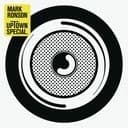The D♯ major scale follows the major scale pattern using nine accidentals (six sharps including two double sharps): D♯ to E♯ (whole step), E♯ to F𝄪 (whole step, where F𝄪 is F double-sharp), F𝄪 to G♯ (half step), G♯ to A♯ (whole step), A♯ to B♯ (whole step), B♯ to C𝄪 (whole step, where C𝄪 is C double-sharp), and C𝄪 to D♯ (half step). This complex notation includes two double sharps and multiple uncommon single sharps like E♯ and B♯, making it highly impractical for reading and performance. The scale is acoustically identical to E♭ major (three flats), which explains why D♯ major never appears in practical music, with composers universally preferring the simpler flat-based notation.
E♭ Major vs. D♯ Major: A Clear Choice
The comparison between D♯ major and E♭ major demonstrates fundamental principles of music notation. While both scales sound identical, reading nine accidentals (including double sharps) versus three simple flats makes E♭ major exponentially easier for musicians. D♯ major requires processing uncommon accidentals like E♯ (sounding like F), B♯ (sounding like C), plus double sharps F𝄪 and C𝄪, creating constant mental translation. E♭ major's three flats (E♭, A♭, B♭) are standard accidentals that musicians encounter regularly, making it practical for composition, sight-reading, and performance. This overwhelming preference illustrates how notation serves practical communication rather than theoretical symmetry.
Theoretical Value for Music Students
Though never used in practice, D♯ major teaches valuable lessons about music theory. It demonstrates how far the circle of fifths can be pushed before notation becomes unsustainable, illustrating why enharmonic respelling is necessary. Studying D♯ major helps students understand double sharps (𝄪), uncommon single sharps, and why certain keys became standard while others remained theoretical. The scale completes the theoretical picture of sharp-based major keys while proving that theoretical completeness doesn't always translate to practical utility. Understanding D♯ major's existence alongside E♭ major deepens knowledge of enharmonic relationships and notational pragmatism.
In all practical musical contexts, use E♭ major instead of D♯ major. This scale exists purely as a theoretical construct showing the limits of sharp-based notation. Understanding D♯ major's impracticality reinforces why music notation evolved to serve performers efficiently, choosing readability over theoretical purity. For music theory students, recognizing that D♯ major equals E♭ major completes understanding of enharmonic equivalents and the practical principles guiding Western music notation.





